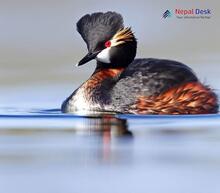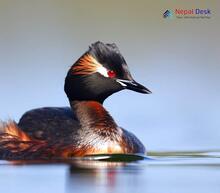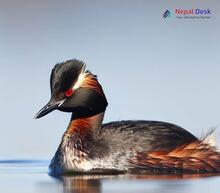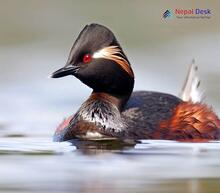Nestled amidst the breathtaking landscapes of Nepal, a little-known group of birds from the Podiceps genus thrives. These aquatic birds, often referred to as grebes, grace the lakes and wetlands of this picturesque region. Here, we dive into the fascinating profile of this unique bird species and unveil the reasons that make Nepalese wetlands a perfect habitat for these feathery creatures.
The Podiceps Genus: A brief introduction
The Podiceps genus is a part of the Grebe family Podicipedidae, comprising species that are uniquely adapted to aquatic habitats. These divers are known for their distinctive appearance - in particular, their lobed toes that enable them to paddle through the water effortlessly. In addition, their slender necks help them maneuver underwater while catching prey.
While not strong fliers, birds in the Podiceps genus have developed other extraordinary ways to navigate. Their keen senses allow them to dive underwater at remarkable speeds, with some species capable of diving up to depths of 30 feet! Their diet primarily consists of fish, insects, and small crustaceans.
Nepal's wetland wonders
Nepal boasts an eclectic biodiverse environment, attracting wildlife enthusiasts from all over the world. In particular, its wetland ecosystem harbors an impressive range of birds like those belonging to the Podiceps genus. The country's diverse topography and numerous freshwater bodies create an inviting habitat where these elusive avian wonders are given ample opportunities to flourish.
The Rara Lake is one such natural attraction that beckons ornithologists and bird watchers alike. This lake offers clear views of grebes frolicking and diving around its shores – a truly spectacular sight! Other noteworthy spots include the Jagadishpur Reservoir and Ghodaghodi Tal – both recognized as Ramsar sites for their significant value in conserving wetland biodiversity.
Conservation Efforts and the Future of Podiceps in Nepal
The conservation of aquatic birds, such as the Podiceps genus, is crucial as they play a vital role in maintaining healthy wetland ecosystems. As natural indicators of water quality, these bird species help monitor the health of the wetland habitats they occupy. Steps have been taken by the Nepalese government, local communities, and non-governmental organizations to ensure the preservation of wetlands and their avian inhabitants.
Education, awareness programs, and habitat restoration efforts are being carried out to accelerate conservation initiatives. Nepal's designation of key sites under the Ramsar Convention exemplifies its commitment to safeguarding crucial habitats for future generations.
In conclusion, Nepal's rich biodiversity continues to captivate nature enthusiasts worldwide. The fascinating profile of the Podiceps genus is just one example of the incredible wildlife that calls this Himalayan paradise home. As conservation efforts continue to gain momentum, we can hope that these elusive birds and their equally breathtaking habitats remain protected for years to come.




